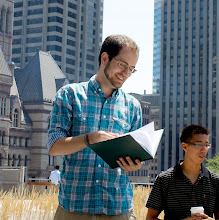You have another chance to 'go green'
You Have Another Chance to Go Green
Can you afford a bottle of water a day? How about a coffee? And what about renewable energy? Affordable, clean, green energy may be available in
Unlike electricity generated by dirty coal or nuclear power, there are now alternatives that are becoming much better known and more popular across the country. Wind turbines, solar (or photovoltaic) panels, biomass and low-impact hydro (water) power are some of the main alternatives. Wind is becoming the most practical and cheapest sustainable energy source we have. Many associated concerns are mitigative, such as noise, which has been significantly reduced by the production of quiet turbines. The general look has been a concern in the past. I just met an artist who found the turbines to be very beautiful, and visited
Biomass energy can be produced through a turbine, using a waste product such as garbage, gas or crops for fuel. Bluewater Power (and City Council for its support) should be applauded for its initiative to produce electricity at a landfill site, using methane (a greenhouse gas) to create power. It’s a great start! Small hydro, as opposed to the giant facilities that exist, produce power in a decentralized manner, and are found in many locations and can be certified to have low ecological impact.
So what is another easy way to support all of this hopeful technology that stands a chance to improve people’s health and reduce risk for all? An
Unfortunately, Bullfrog’s service is not currently available in Sarnia-Lambton. The company is constantly expanding their service to cities across the province, recently adding
Bullfrog’s clean energy could come to
So don’t waste your money on that water bottle – your tap water may be as safe, healthy, and doesn’t come with the unnecessary bottle or high cost. And you know that coffee isn’t good for you or the planet. Bullfrog’s power costs 9.1 cents per kilowatt hour, a little more than the regular (let’s call it Premium Power). But with coal and nuclear, there’s a price to pay for that low number, whether it be found in government cost overruns or damage to this and future generations caused by pollution. And while the dollar figure for that power will be going up, with Bullfrog you can lock in the price if you choose. You can offset that extra dollar a day cost for the Premium by conserving energy in your home, just as Caldeon has done in their town hall. There are tips for that on the website. And why not start saving up, before Bullfrog even arrives.
So make the switch. It will be as easy as dialing 519. I swear.
Darcy Higgins is a native of

